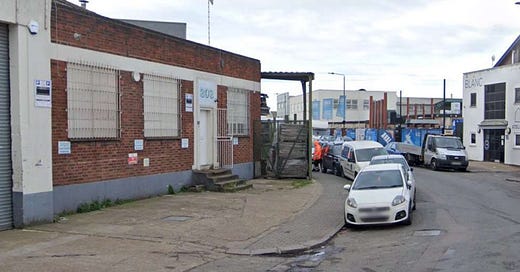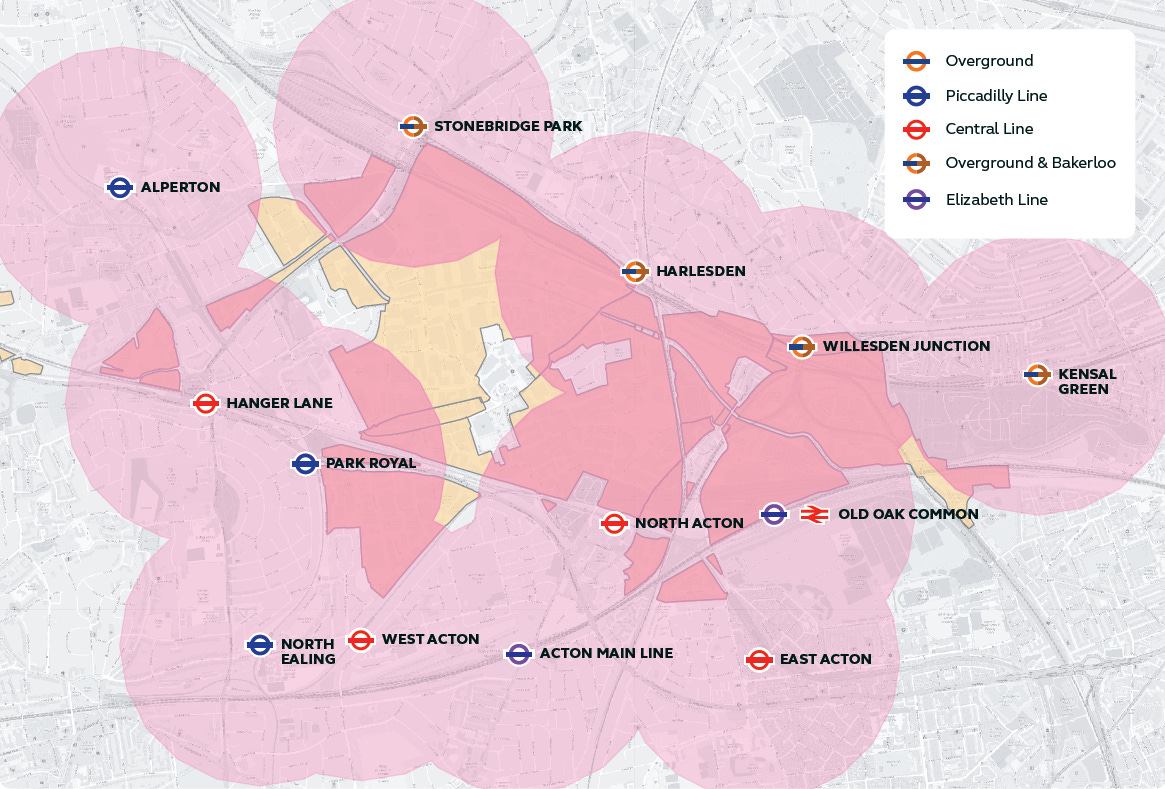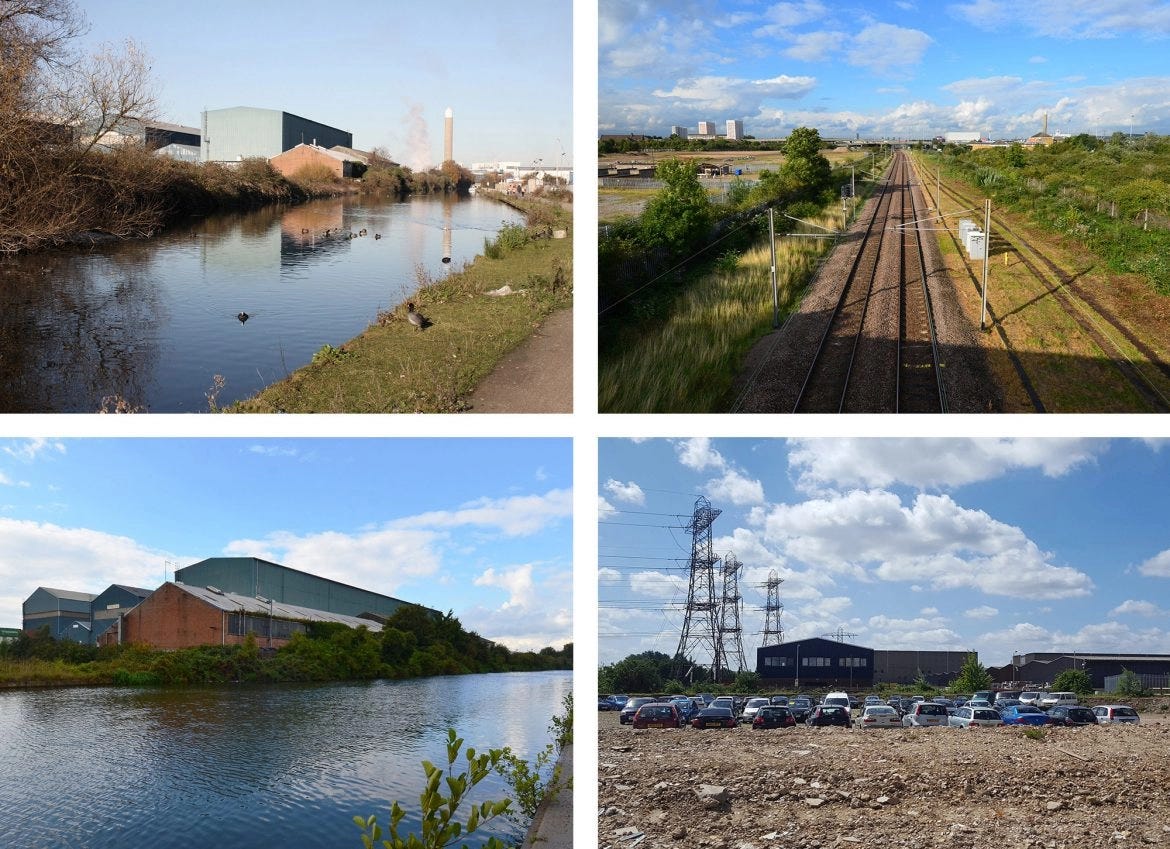Where should we build London's homes?
Strategic Industrial Locations are a great place to start
The housing crisis across the UK is worsening and London is at its epicentre. Some of the most jarring facts about the crisis include:
An average couple on normal wages would have to save for 30 years to get a deposit in London. And this saving is harder because rent payments now take up more than 40% of a person’s income after tax.
The median London property now costs 14 times the median London household income. This means even if the average household saved up a 10% or even 20% deposit, they would still struggle to get a mortgage.
Since the mid-1990s, London’s dynamic economy has seen a 62% rise in the number of jobs. But house building has not kept up. For every 10 jobs London created, only 3 homes have been built.
The housing crisis is so bad because we don’t build enough homes. Despite London having a target of 52,000 homes per year in the London plan, we’ve not built that many homes since the 1930s.
We need to build more homes. Because the shortage is so severe, we need an all of the above strategy, from estate renewal to gentle density, building new towns to targeted green belt release. Yet there is one designation of land that the Mayor has control over that effectively bans all new housebuilding. So where can we build much needed homes?
Strategic Industrial Locations (SILs). ⅔ of London’s industrial land is protected by either SIL or Locally Significant Industrial Sites (LSIS) status. The idea behind SILs is that they are London’s reservoir of land for general industry, logistics, and waste management, where only industrial uses are permitted. To imagine what a SIL is like, picture row after row of corrugated single-story steel boxes. Self-storage businesses, seemingly abandoned warehouses, and car rental returns predominate.

SILs protect these uses by outright banning any non-industrial development proposals. Within the London plan, the Mayor has the power to specify what uses SILs can have and directs Boroughs to protect SILs from non-industrial (aka housing) developments. The ban on building housing on SILs contributes to industrial land costing only ⅓ as much as land that can be used for homes.
By blocking housing on SILs, the policy implicitly subsidises the businesses that operate there. Maybe it makes sense for Amazon to have a warehouse right next to a tube station, but if it does make economic sense, they should be willing to pay the full price for the land. But certainly most of the uses of SILs are uneconomic when compared to building homes.
When land prices are high - as they are in London - it is a signal to intensify our use of it. We should build ten storeys on an expensive plot, not a bungalow. However, industrial use is much, much harder to densify. Multi-storey manufacturing is rare and hard to get to work. That's why industrial land should be far away from a city's core.
SILs aren’t just a small parcel here and there either. Across London there are 3,921 hectares that are banned from housing development. That’s larger than Westminster, Kensington and Chelsea, and the City of London combined. Some of the specific areas are massive too. Park Royal Industrial Area is 439 hectares, three times the size of Hyde Park.

A lot of SILs are very well connected too. Park Royal is surrounded by 11 underground stations, Acton Mainline on the Elizabeth line, and soon(ish), the new Old Oak Common HS2 station. Across London, there are 2,095 hectares of SILs that are within a 10 minute walk of a tube, rail, or tram station. That’s the size of the City of Westminster! Land that is already well connected where we cannot build new housing on. Places that we are subsidising to continue inefficient land use, while 300,000 London households are on the waiting list for social housing and hundreds of thousands more young people realise the dream of owning their own home is increasingly out of reach.
Already SILs are blocking house building. Enfield Council hoped to build 10,000 new homes around the recently upgraded Meridian Water station. The council proposed swapping existing SIL land near the station with an area further away from central London and closer to the country’s strategic road network. Yet this simple swap to unlock £6 billion in private investment has faltered because the Greater London Authority has refused to de-designate any of the industrial land. If the Mayor doesn’t intervene, 5,000 of the proposed 10,000 homes will have to be scrapped, threatening the viability of the scheme and further worsening the housing crisis.
Now some people may object to building homes on SILs, arguing that London does have a need for industrial land. After all, it is true that it is better for warehouses to ideally be closer to the population they serve so there’s fewer miles driven by delivery vans, plus these warehouses provide jobs.
Yet this doesn’t seem convincing. Replacing the warehouses with new energy efficient homes could reduce emissions and allow people to live within walking distance of public transport. On a per capita basis, London has some of the lowest emissions of any place in the UK, so enabling more people to live in the capital near public transit is good for the environment.
Businesses are already proving they don’t need their supply chain to be right next to their customers. For example, Asda relies on a food distribution centre outside of London's mayoral boundary to service its shops in the capital. Also if we build mixed use neighbourhoods, the communities will be able to support new jobs. Some of the land could even be home to co-location of industry and housing, keeping the jobs while providing Londoners with new homes.
The upcoming London Mayoral election will have big impacts on the future of the city and the affordability of housing. To bring a better future and increase the supply of housing, the next Mayor should commit to amending the London plan to de-list all Strategic Industrial Locations that are within 800m of an existing station. Furthermore, they should explicitly support councils swapping SIL land near stations with other land closer to the strategic road network to enable SIL swaps that would benefit developments like Meridian Water. Finally the Mayor should amend the London Plan to permit higher densities on industrial land to make the co-location of housing and industry viable.
It is a policy choice to restrict the supply of land that can be used for building new homes. Without building these new homes, housing will remain eye-wateringly expensive and put the dream of owning a home further out of reach for young Londoners. We need to get building more homes, and Strategic Industrial Land near existing stations is the best place to start.
Strategic Industrial Locations are discussed within Britain Remade’s new Get London Building report, along with a number of other practical policy suggestions that the winner of May’s London Mayoral Election can implement.








Perhaps if we stopped importing double the population of a city the size of Bradford every year there wouldn't be a problem of where to put them...
And what about the reservoirs (last one was built in 1989), sewage works, hospitals, GP surgeries and the myriad other facilities that are concomitant with such an influx?
This whole debate about where to build the hutches (because modern "homes" are little more than that) looks like a weapon of miss distraction to me!